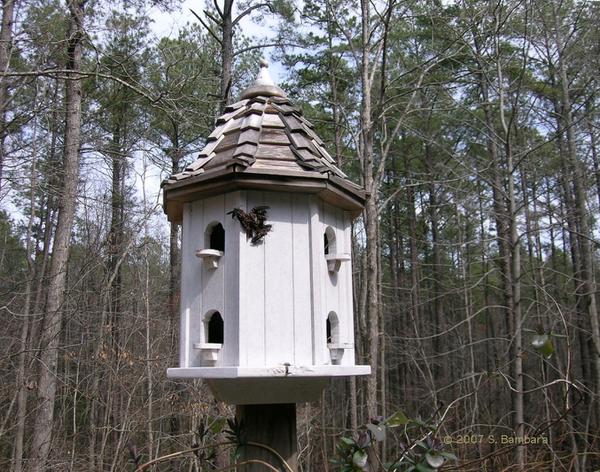Wear long sleeved shirts and long pants to help protect against stings.
Wasp nest in attic vent.
Rats mice squirrels and raccoons aren t the only pests known to seek refuge in the dark confines of an attic.
Unlike a wasp a honeybee hives consist of many thousands of bees within just a few days a brand new colony may have a several sheets of honeycomb near or inside the vent or air duct.
Spray the nest according to the directions on your spray.
If your wasps have built a nest on the floor of your attic bomb style wasp poisons work very well.
Getting rid of bees in a vent or air duct is typically done by extermination or preferably live removal and relocation.
Wasps getting thru attic vents many of the ridge and other types of attic vents i ve seen have louvers with almost 1 4 inch slits that are big enough for wasps to get thru and they do not have any secondary screen.
If the nest is a hanging nest make sure you purchase a spray with a projectile shot so that you can completely cover the nest with it.
If in a vent above ground level be sure to check that the vent does not serve an internal room of the house or your insecticidal wasp killer powder may enter the internal room when blown into the vent from outside.
Check your attic for openings that the wasps could be using to get into the vents.
In a cavity wall.
Honey bees in a vent or air duct of a building or house can be difficult to get rid of.
Although the wasps are entering the air brick vent the nest may be up to 6 feet away under a building or it may be directly behind or to the side of the air brick ie.
Any breaches require sealing to prevent more wasps from entering.
Breaks in the insulation or small holes in the wood are common sources for wasp entry.
Another very common place to find wasps nesting is in attic spaces.
It is very easy for wasps to get into attics normally due to openings around vents and or poor construction practices that leave big gaps between the sections of wood near the areas where the shingles and gutters meet up.

